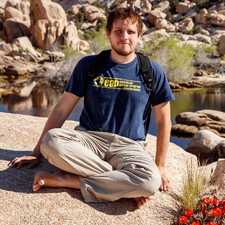June 25, 2013
My poster titled Instrumenting Thailand’s Coastline: Mobile Devices for Environmental and Disaster Monitoring won best poster of Mobisys 2013.
This poster outlines ongoing work using mobile devices for communication and computation for environmental sensor networks in Thailand. This work is funded by a Fulbright scholarship spanning January to September 2013. The work is a partnership between the Center of Excellence for Ecoinformatics at Walailak University, the University of California Santa Barbara, and the University of California San Diego. It brings computer scientists and biologists together for the development of technology aimed at studying Thailand’s coastal ecosystems. Bandon Bay, Surathani province, is home to mussel, cockle, oyster, and shrimp farmers.
In March 2011, severe rainfall in the southern region of Thailand caused an influx of freshwater and sediment into the bay. Cockle and oysters were suffocated by a thick layer of sediment. The surge of water forced shrimp out into the open ocean. As a result, the aquaculture industry suffered immensely, with losses upwards of eight hundred million Baht. The aim of this project is to provide a valuable service to the region by giving farmers and locals a resource for assessing the water quality in Bandon Bay, as well as providing a warning system against possibly treacherous environmental patterns. The system utilizes a Galaxy Nexus Android phone for real-time data collection and processing.
The data is streamed to an Amazon EC2 server where it undergoes event-detection and archived for later study by ecologists. The system is deployed in the Gulf of Thailand, one mile off the coast. For power, the system uses a 40W solar panel. The data is transmitted using the phone’s built in cellular modem. The system utilizes a SparkFun Electronics IOIO for interfacing to external sensors and power. The phone currently interfaces with a Vaisala WXT 520 meteorological station, with plans to extend the sensor suite to include water sensors for conductivity, dissolved oxygen, and pH.
The environmental conditions in the bay require a low power device that is capable of wireless communication. While there are industry devices capable of this, like the Campbell Scientific sensor suites, they are prohibitively expensive for developing nations and are heavily proprietary, impeding expansion and development. In contrast, a mobile device running open source software is a perfect candidate, as it is inherently capable of cellular communication, has a backup battery for intermittent power loss, and has the computing power necessary for data ingestion and onboard processing from a multitude of meteorological and aquatic sensors.
The system utilizes the Open Source Data Turbine streaming middleware for real-time buffered data streaming and visualization. It builds upon the SensorPod software stack developed at UCSD for interfacing with environmental sensors. For event detection, the system utilizes Esper for complex event processing. The mobile device collects and streams the data, which is captured by the cloud server and is run through a realtime event detection engine. Both the original data and the derived analysis are then made publicly accessible and mirrored to universities in Thailand in real-time, using the DataTurbine middleware. Interested parties can visualize both the data and the derived analysis in real-time. In the event of connectivity interruptions, the mobile device buffers the data and retransmits when a connection is re-established.
Currently, the system is deployed in the bay, and we are in the process of writing the event detection logic. Once the system is determined to be stable, we will add water sensors necessary for flood detection. We are investigating transitioning some of the event detection logic onto the mobile device itself, but we are hesitant to use the Android compatible version of ESPER, as it does not have ongoing support. If this project proves successful, we are considering mirroring the technology for use in coral observation and detection of coral bleaching.
This work is made possible by my co-authors Sirilak Chumkiew & Peter Shinn, as well as the support of Tony Fountain at UCSb and Krisanadej and Mullica Jaroensutasinee at Walailak University.

